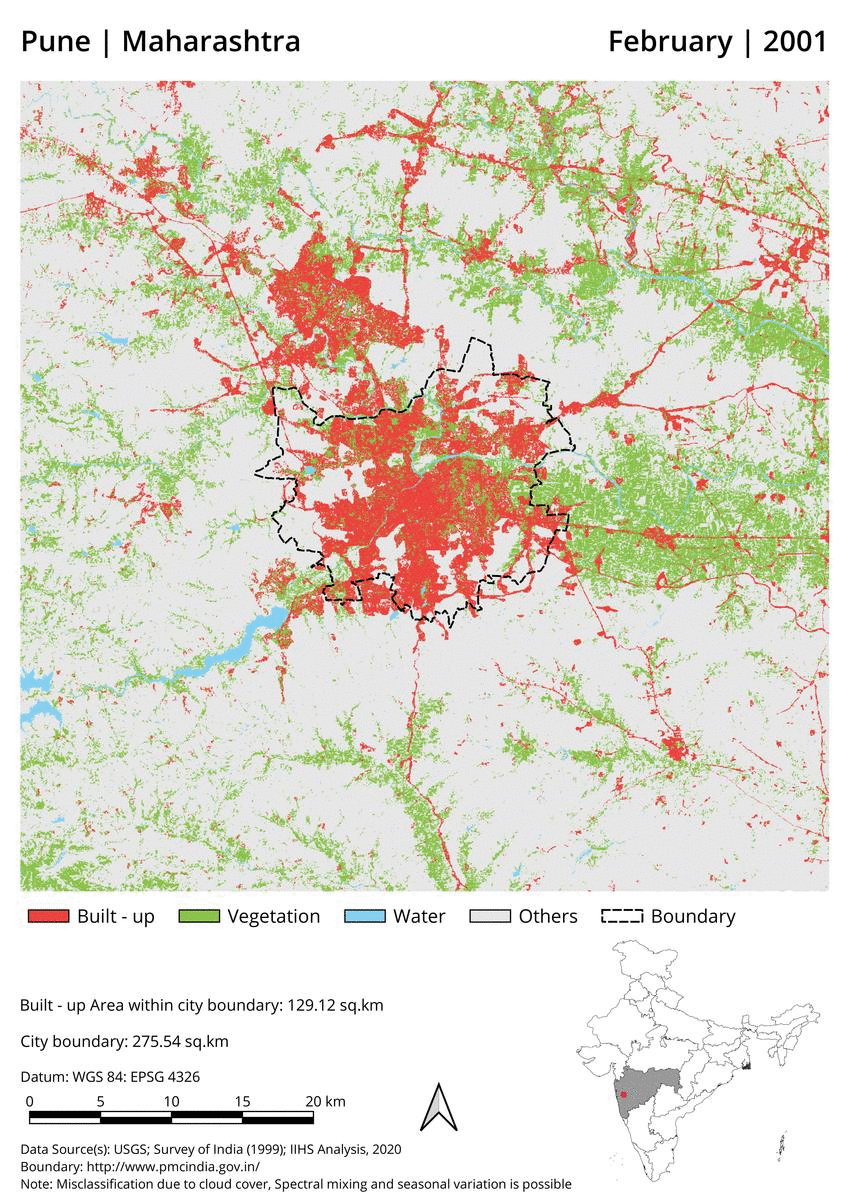Pune
Urban and peri-urban agriculture in Pune
Pune is India’s eighth largest urban agglomeration with 3.13 million inhabitants (Census 2011). The city has been typically characterised by its numerous universities and the military (being home to the Indian Army’s Southern Command). Since the 1990s, post-liberalisation, Pune has seen remarkable economic and demographic growth, emerging as a key industrial centre and with the second-highest HDI in Maharashtra of 8.14 (second to Mumbai). Today, Pune is characterised by widespread economic growth and well-connected infrastructure, moving from a primarily agrarian economy (since it served as a major regional agricultural market hub) to a strong industrial hub. Pune lies along a larger urban development corridor stretching from Ahmedabad via Mumbai to Pune and is also named as a Smart City in India’s 100 Smart Cities Mission
Past trajectory,"smart city" aspirations, and urban development
Pune has seen several waves of urbanisation starting from the 1700s when it served as the Peshwa capital and transformed from a collection of villages to a town to its industrial and IT transformation in the 1990s. More recently, in 2016, it was selected as one of the 98 cities to be developed under the National Smart City Mission with the aim of following an area-based approach that develops new green spaces of more than 250 acres within the geographic limits of the Urban Development Authority (UDA). A smart city strategy for Pune was developed in 2015 with claims of 50% involvement from citizens in the strategy development. The vision states:
‘Leveraging its rich cultural and natural heritage, strong human capital and strong business environment as key strengths, Pune aspires to become the most livable city in India by solving its core infrastructure issues in a ‘future proof’ way and by making its neighborhoods beautiful, clean, green and livable’ - Pune Smart City Website.
The Smart City projects are mostly aimed at improving infrastructure (public transport, water), providing public services (e.g. hospitals, schools, public toilets), redeveloping one slum-pocket, and ‘typical’ ‘smart city’ features (e.g. Wi-Fi access in public areas, ‘smart parking’). One intervention aims to develop one vacant community space into a recreational and farming plot including “edible arcade, organic landscape, workshop area for group activities, community spaces, convertible spaces for citizen engagement” with key users being “senior citizens, kids, NGOs, senior citizen clubs, organic food vendor organizations.”
Due to its population growth, developed areas in Pune expanded from an area coverage of 21% in 1990 to 43% in 2008, mainly at the expense of farmland and other green areas. In addition, the percentage of impervious surfaces in already developed areas, such as the inner city, greatly increased, which is related to the loss of soil functionality and the ability to provide required ecosystem services. Under these conditions, UA, including home gardens, might become more relevant as productive green spaces that contribute to urban sustainability.
During 1992 to 2001, Pune witnessed a loss of about 18 km2 green spaces areas due to conversion into residential or traffic use. land (5.8 km2) and grassland (6.5 km2) – converted to built-up areas from 1992-2001. Rapid urbanization during 2001-2013 led to a massive conversion of 52.6 km2 green space area (33.9 km2 grasslands, 15.9 km2 agriculture land) into built-up land use.

Figure 1: A visual comparison of Pune's expanding built-up areas, between the years 2011 and in 2016. (Source: Teja Malladi, et al. Geospatial Lab, Indian Institute for Human Settlements).
Pune has a long-standing, well-developed home gardening community, organised through a network of local gardeners’ clubs, which promote the distribution of knowledge about cultivation practice and the exchange of experiences. Local research institutions and private consultancies, complement local knowledge and have professionalised gardening practices. More recently, there has been a rapid rise in start-ups using technology-based innovations for farming, using lenses of sustainability, resource efficiency as motivations.

